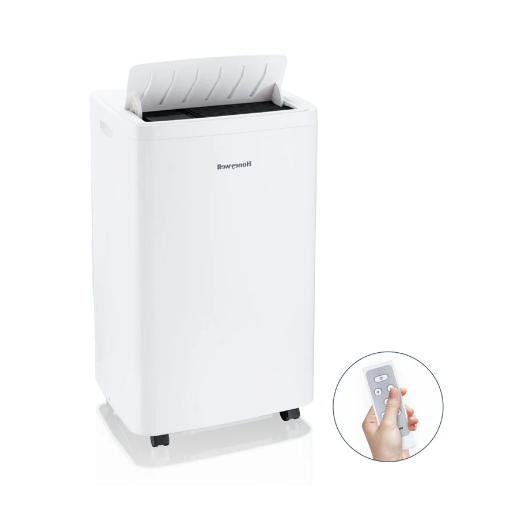When it comes to maintaining a comfortable and healthy indoor environment, both dehumidifiers and air conditioners play essential roles. However, while these appliances may appear similar at first glance, they serve distinct purposes and offer unique benefits. Whether you’re trying to beat the summer heat, reduce excess moisture, or improve air quality in your home, understanding the differences between a dehumidifier and an air conditioner is crucial. This article will break down how each device works, its primary functions, and help you decide which one is best suited for your needs. By the end, you’ll know to make an informed choice and create the perfect indoor climate.
Functionality and Performance
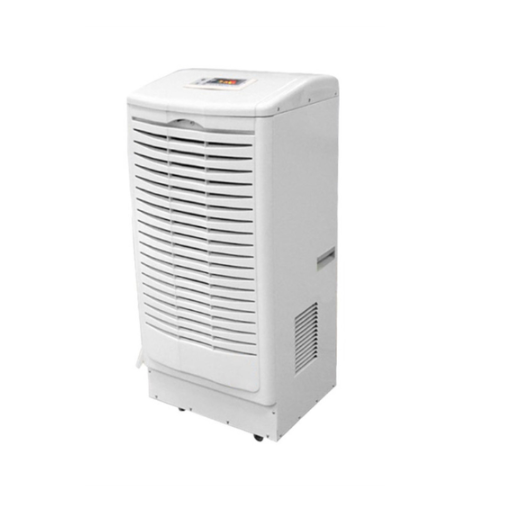
How a Dehumidifier Operates
Dehumidifiers try to balance indoor humidity by taking more moisture from the air. Warm and humid air enters the device through intake vents; inside the dehumidifier, the air passes over cold coils where it cools down and the moisture condenses into water droplets. This water collects either in a reservoir or drains out via a Hose, and the drier air is released back into the room.
A dehumidifier is chiefly used for maintaining comfortable, healthy humidity levels in the range of 30% to 50%. It reduces moisture in the air and prevents mold, mildew, and dust mites from establishing themselves, all of which prefer a damp setting. Hence, these units are apt for basements, bathrooms, or any other places susceptible to high humidity.
Different dehumidifiers come in different capacities and sizes to cater to different settings and uses. A majority of them come equipped with adjustable humidity settings, power-saving features, and auto switch-off when full. The simplicity behind their working has kept them really useful for air purification in homes and industries all through the years.
How an Air Conditioner Operates
The air conditioner pulls heat from the interior space and discharges it outside, thereby promoting a cool, comfortable environment. At the center of this operation is the refrigeration cycle with the refrigerant, a substance capable of absorbing and releasing heat as it shifts between the liquid and gaseous states. Heat transfer is the mainstay of any air conditioning system.
It starts at the evaporator coil within the unit, where the refrigerant pulls heat free from the indoor air. A fan then blows this now-cooled air back into the room, lowering its temperature. The warm gaseous refrigerant heads toward the compressor sitting outside. Here it is compressed; its temperature is accordingly raised, and the outgoing hot gas heads toward the condenser coil. In the condenser coil, the heat is absorbed by outdoor air assisted by another fan, and the refrigerant turns back to a liquid before returning to the evaporator.
The refrigerant goes back to the evaporator coil, repeating the cycle. The cycle continues until the thermostat registers that the temperature of the indoor air has reached the desired set temperature. Air conditioners are now usually provided with features like air filters to purify air and energy-saving technology for reduced energy consumption and environmental friendliness.
Comparison of Cooling and Dehumidifying Capabilities
Air conditioners cool or dehumidify to a certain extent, whereas a dehumidifier dehumidifies only without providing any cooling.
|
Aspect |
Air Conditioner |
Dehumidifier |
|---|---|---|
|
Function |
Cooling |
Moisture Removal |
|
Humidity |
Moderate Control |
High Control |
|
Temperature |
Lowers |
Maintains |
|
Power Use |
High |
Low |
|
Expense |
High |
Low |
|
Location |
Large Spaces |
Damp Areas |
|
Air Benefit |
Allergen Filter |
Mold Prevention |
|
Upkeep |
Complex |
Simple |
|
Sound |
Moderate |
Quiet |
|
Tech Features |
Available |
Available |
Energy Efficiency
Energy Consumption of Dehumidifiers
While dehumidifiers remove excess moisture from the air to support healthier and comfortable indoor conditions, it is important to consider the efficiency of the unit, the size of the area, and the required level of dehumidification when considering energy consumption. Most new dehumidifiers today come with energy-efficient technology that allows them to dehumidify effectively while consuming the least possible amount of electricity. For example, Energy Star-certified dehumidifiers are believed to consume 15% less energy than their non-certified counterparts, thus making considerable energy savings over the long run.
Another relevant factor affecting energy use is the capacity of the dehumidifier, measured in pints of water removed per day. Lesser units made for tight spaces generally use less power but run longer in order to remove significant humidity. Larger units, on the other hand, are well suited to large spaces or high humidity conditions, removing moisture in the shortest time possible, albeit with higher energy consumption. Regular maintenance, like cleaning and replacing dirty filters and coils, would also enhance the energy efficiency of operation to avoid wastage of power.
Though dehumidifiers remain fairly low-power appliances, cultivating habits aligned to energy conservation would further goose their efficiency. Using the appliance during off-peak hours, setting meaningful humidity levels instead of running it continuously, and combining its use with natural ventilation are all worthy of consideration. A model with adjustable settings and an automatic shut-off feature will only run when the device actually needs to be on. Under such circumstances, dehumidifiers still remain a feasible option for air quality improvement without much investment in energy.
Energy Consumption of Air Conditioners
ACs are widely known as the highest energy-consuming appliances in any household or commercial space. Their energy consumption depends on factors such as unit capacity, efficiency rating, duration of use, and weather conditions outside. For example, a typical central air conditioning system could consume roughly 3,000 to 5,000 watts per hour, translating into sky-high utility bills during summer.
With technical advancements, an energy-efficient inverter-based air conditioning system is now available that allows users to adjust the performance and preferred energy demand. Units with higher Seasonal Energy Efficiency Ratio (SEER) or Energy Efficiency Ratio (EER) values also utilize comparatively less power than older models. Moreover, installation of smart thermostats and utilization of energy-saving modes can help consume less power by keeping the system off when it is not needed to cool the space.
In addition to working towards energy efficiency, good maintenance of air conditioners, such as cleaning or replacing the filters and sealing of ducts, is of utmost importance. The data shows that maintenance during the year could lead to a 5-15% increase in efficiency. By merging efficient models with usage patterns that consider environmental effects, consumers and even commercial buildings can consume less energy, thus incurring fewer charges and conserving our environment.
Cost-Effectiveness: Running a Dehumidifier vs an AC Unit
Dehumidifiers may certainly be more cost-effective, though air conditioners are better off as they serve to cool and dehumidify at the same time.
|
Aspect |
Dehumidifier |
AC Unit |
|---|---|---|
|
Upfront Cost |
Low |
High |
|
Energy Use |
Low |
High |
|
Purpose |
Humidity Only |
Cooling + Humidity |
|
Operation |
Cheaper |
Expensive |
|
Maintenance |
Simple |
Complex |
|
Lifespan |
Long |
Moderate |
|
Coverage |
Small Areas |
Large Spaces |
|
Efficiency |
High for Humidity |
Dual Function |
|
Noise |
Quiet |
Moderate |
|
Smart Tech |
Available |
Available |
Environmental Suitability
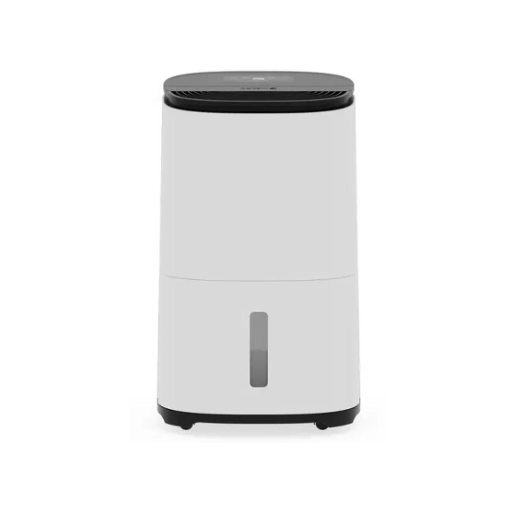
Best Conditions for Using a Dehumidifier
The way dehumidifiers work makes them suitable to be installed in circumstances of high moisture in the environment, preferably above 50%. Excess moisture presents a series of complications, such as the emergence of molds and acarid dust or discomfort, to name just a few. Basements, bathrooms, or areas with restricted ventilation are common venues where a dehumidifier could go a long way. These devices help keep the indoor humidity at an optimal level, which is usually between 30 and 50 percent, for a healthier and comfortable atmosphere.
The other key condition for applying the dehumidifier is for the warmer half of the year or humid climate areas. In the presence of such a weather scenario of high humidity joined by a considerable temperature, it enlarges the problems like the formation of condensation on walls and windows, leading to a slow healing process. In the summer, running a dehumidifier makes it more comfortable and creates a synergy with air conditioning systems that lowers the energy costs and keeps a balanced indoor climate.
Protecting household products that are prone to excessive moisture is also a major function of dehumidifiers. The right humidity levels can save wooden furniture, books, and electronics… from warping, rusting, or mildew. Such environments are often reported to offer relief to asthmatic and allergic individuals because they reduce airborne irritants such as mold spores and dust particles. These are some reasons that make dehumidifiers a workable option in residences, offices, and any other moisture-confronted areas.
Best Conditions for Using an Air Conditioner
Optimal conditions must specify how to use an air conditioner well, and its performance and energy efficiency. Air conditioners work best in areas with higher outside temperatures and levels of humidity. Above 75°F (24°C), the cooling systems will maintain the indoor spaces at pleasant temperatures and keep people safe from heat-related illnesses. Also, the air conditioners can work alongside dehumidifiers to reduce indoor humidity levels at times of high moisture down there, therefore preventing mold growth and health concerns.
For air conditioners standing in ideal working conditions, there must exist adequate insulation and good sealing of windows and doors. Poorly sealed apertures can let cool air escape outside and warm air in, thereby forcing the air conditioner to work extra hard and consume more energy. To be fair in use, the air conditioner should be set to a reasonable temperature: about 78°F (26°C) for cooling in summer. This saves electricity while balancing comfort against cost.
The new and modern air conditioners with programmable thermostats or smart technology offer an even better way to give indoor climate control based on current conditions. These can monitor themselves for setting adjustments depending on the time of day, occupancy, or weather forecast to cool precisely whilst using less electricity. By keeping the unit in good condition, such as cleaning filters, checking for leaks, and ensuring that refrigerant levels are adequate, you greatly increase the efficiency of the air conditioning system during its lifespan. If we go together now with energy-saving techniques, such as circulating air with ceiling fans, air conditioners can keep you comfortable on even the hottest and most humid afternoons.
Choosing Between a Dehumidifier and an Air Conditioner Based on Climate
While the air conditioners are typically very suitable for a hot climate (i.e., hot and very humid region), dehumidifiers are the best choice for a wet, cool environment.
|
Aspect |
Dehumidifier |
AC Unit |
|---|---|---|
|
Climate |
Cool & Humid |
Hot & Humid |
|
Primary Use |
Moisture Control |
Cooling & Humidity |
|
Best Areas |
Basements, Coastal |
Living Spaces |
|
Energy Use |
Low |
High |
|
Comfort |
Dry Air |
Cool Air |
|
Season |
Year-Round |
Summer |
|
Efficiency |
High for Humidity |
Dual Function |
|
Cost |
Low |
High |
|
Noise |
Quiet |
Moderate |
|
Placement |
Small Areas |
Large Spaces |
Cost Analysis
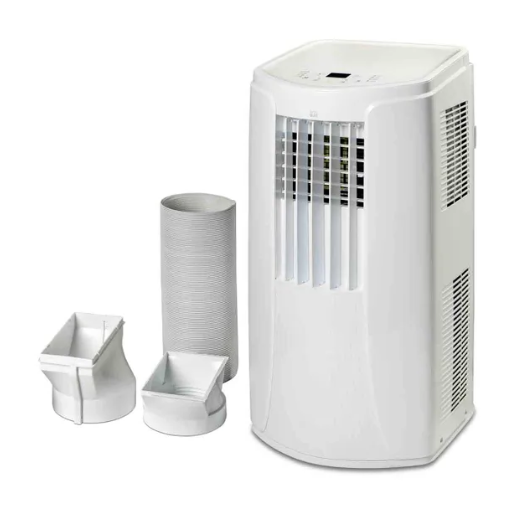
Upfront Purchase Price Comparisons
When considering the price of dehumidifiers and AC units at the time of purchase, it is important to also consider the cost of their features and functioning. Traditionally, dehumidifiers are more economical, with the cheaper models costing anywhere from $50 to $100. The more expensive solutions, which include additional digital controls and larger capacity, range from $200 to $300. Conversely, air conditioners, particularly central AC systems or high-end portable types, tend to be far more costly upfront. Possibly entry-level window units start at $150, while split systems or central units can proceed up to the range of $3,000 to $7,000, owing to their more complex set design and installation requirements.
Another factor that could influence appliance pricing in the case of both devices is energy efficiency ratings. Most modern dehumidifiers feature an Energy Star rating, which means that it must meet very stringent efficiency standards, which can influence the price. Likewise, air conditioners with a higher SEER value may have a much higher initial cost, and great energy-saving performance over time might be an investment well worth making. So, the buyers have to evaluate the upfront cost versus possible savings on energy over time.
Finally, deciding whether to purchase a dehumidifier or an AC unit should be a matter of your budget, along with what the space demands from you. Dehumidifiers allocate money to a lesser extent to moisture control and hence are best suited to areas like basements where there is a great deal of moisture build-up. The air conditioners, on the other hand, worth their heavy dollar cost, offer a somewhat impersonal means of dehumidifying air while keeping a larger living area comfortable and warmer.
Installation Costs for Dehumidifiers vs Air Conditioners
The cost of installing dehumidifiers is low, while the initial investment for air conditioner installation may be very expensive.
|
Aspect |
Dehumidifier |
AC Unit |
|---|---|---|
|
Upfront Cost |
Low |
High |
|
Setup |
Simple |
Complex |
|
Labor |
Minimal |
Professional |
|
Time |
Quick |
Longer |
|
Range |
$50-$400 |
$500-$9,200 |
|
Whole-House |
$1,500-$3,500 |
$4,000-$8,000 |
|
Portability |
Yes |
No |
|
DIY Option |
Available |
Rare |
|
Maintenance |
Easy |
Costly |
|
Energy Use |
Low |
High |
Maintenance Requirements
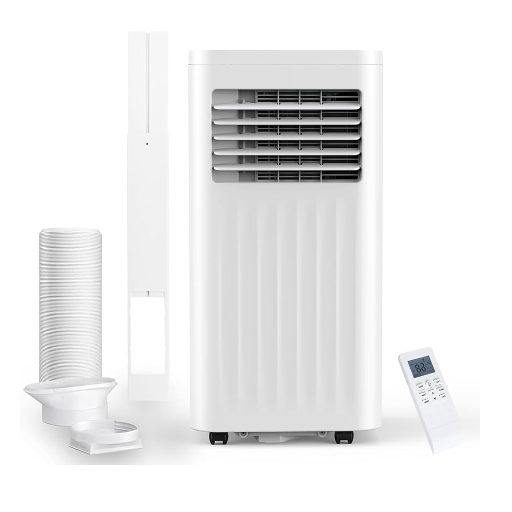
Cleaning and Maintenance of Dehumidifiers
Cleaning and maintenance are important for a dehumidifier to work well. I always make it a point to clean the air filter since this gets filled with dust and debris over time. I check and clean the filter every two to three weeks, depending upon usage. Most filters are washable; therefore, I just rinse them under warm water, allow them to dry completely, and fit them back in. This will avoid blockages and keep the machine working optimally.
Another thing I am always examining is the water collection bucket. I frequently empty it to prevent mold or bacterial growth, especially during the humid season, as the dehumidifier accumulates a large amount of water. After emptying, I wipe the inside of the tank using mild detergent and warm water. Doing this helps lessen the possibility of odor forming and keeps it clean for use.
Lastly, I inspect every few months to make sure the coils and interior parts are dust-free. When I spot some dust buildup on the coils, I gently brush or vacuum them out to get the proper air circulation. In terms of placement for the best working condition, I also make sure my dehumidifier is kept away from walls or any obstructions that would restrict circulation. Keeping this process up ensures my dehumidifier stays in great condition and extends its life.
Cleaning and Maintenance of Air Conditioners
Cleaning and maintenance are essential steps for air conditioners to work in top condition and conserve energy. While doing these maintenance measures in an AC system, air filter cleaning or replacement is the number one priority. Dirty filters would cut off airflow, diminish cooling capacity, and increase energy consumption. Experts recommend inspections about every 1-2 months during heavy use and filter replacements if they seem clogged or worn.
Beyond that, both the evaporator and condenser coils need to be cleaned from time to time. In the course of time, a layer of dirt could build up on the coils, and this reduces their capacity to absorb heat. They can either use a soft brush or a coil cleaner to remove the dirt in a way that will not harm the unit. Concerning the fins, checking if they are bent and straightening them would also help, as bent fins restrict airflow.
To increase performance further, inspecting the sealing around window units once every year for any potential gaps that could lead to air leaks would be advisable. Cleaning ductwork and keeping vents open enhances utility in a central air system. Scheduled professional maintenance service, such as a tune-up before the peak season, ensures that early detection can be done in case of refrigerant leaks or motor problems affecting performance, hence energy costs.
By becoming proactive in the maintenance of this equipment, the user can put extra years into the air conditioners, keep energy usage to a minimum, and enjoy consistent and reliable cooling throughout the year.
References
-
Dehumidifiers – MU Extension – University of Missouri
This source explains how central air conditioning can reduce humidity in homes, potentially eliminating the need for a separate dehumidifier. -
Optimizing Energy Efficiency and Improved Dehumidification
A research paper from the University of Central Florida on how variable capacity air conditioners can manage humidity without supplemental dehumidifiers. -
Controlling moisture problems in your home – University of Minnesota Extension
This guide provides insights into using air conditioners and dehumidifiers to manage indoor humidity effectively.
Frequently Asked Questions (FAQ)
Q: What’s the difference between a dehumidifier and an air conditioner?
A: The main difference lies in their primary functions. An air conditioner cools the air in your home by removing heat and humidity, while a dehumidifier focuses solely on removing moisture from the air, improving indoor air quality and comfort without necessarily cooling the space.
Q: When should I use a dehumidifier?
A: You may need a dehumidifier when dealing with high humidity levels, especially in areas like the basement or during muggy seasons. It helps to maintain ideal humidity levels, preventing mold growth and improving the overall indoor environment.
Q: Can I use a dehumidifier with an air conditioner?
A: Yes, using a dehumidifier with an air conditioning system can enhance comfort. While the air conditioner cools the air, the dehumidifier extracts excess moisture, allowing for better humidity control and improved air quality indoors.
Q: Do air conditioners and dehumidifiers consume a lot of energy?
A: Energy consumption varies based on the model and usage. Generally, air conditioners use more energy to cool the air, while a dehumidifier may save energy by reducing humidity levels without significantly lowering temperatures. Choosing energy-efficient models can help minimize costs.
Q: How does a dehumidifier work?
A: A dehumidifier works by drawing in humid air, cooling it over coils to condense water vapor, and then expelling drier air back into the room. This process effectively removes excess moisture, which helps improve indoor air quality and comfort.
Q: Is a dehumidifier better than an air conditioner for humidity control?
A: A dehumidifier is often better for controlling humidity, as it specifically targets moisture removal without cooling the air. However, the best choice depends on personal preferences and the specific needs of your indoor environment.
Q: What are the installation costs associated with dehumidifiers and air conditioners?
A: Installation costs can vary widely based on the type and size of the appliance. Central air conditioning systems typically have higher installation costs compared to portable dehumidifiers, which are easier to set up and often don’t require professional installation.
Q: Can I use a portable air dehumidifier to improve air conditioning efficiency?
A: Yes, a portable dehumidifier can enhance air conditioning efficiency by reducing the moisture in the air, allowing the air conditioner to cool more effectively. This combination can lead to optimal comfort and energy savings in your home.
Q: What should I consider when choosing between a dehumidifier and an air conditioner?
A: When deciding, consider factors such as your primary need (cooling vs. humidity control), energy efficiency, installation costs, and the specific environment in your home. Homeowners often prefer dehumidifiers in humid climates to maintain indoor air quality without excessive cooling.
Q: How can humidity levels affect indoor air quality?
A: High humidity levels can lead to poor indoor air quality by promoting mold growth and dust mites. Using a dehumidifier can help maintain optimal humidity levels, thereby improving air quality and creating a healthier living environment.

